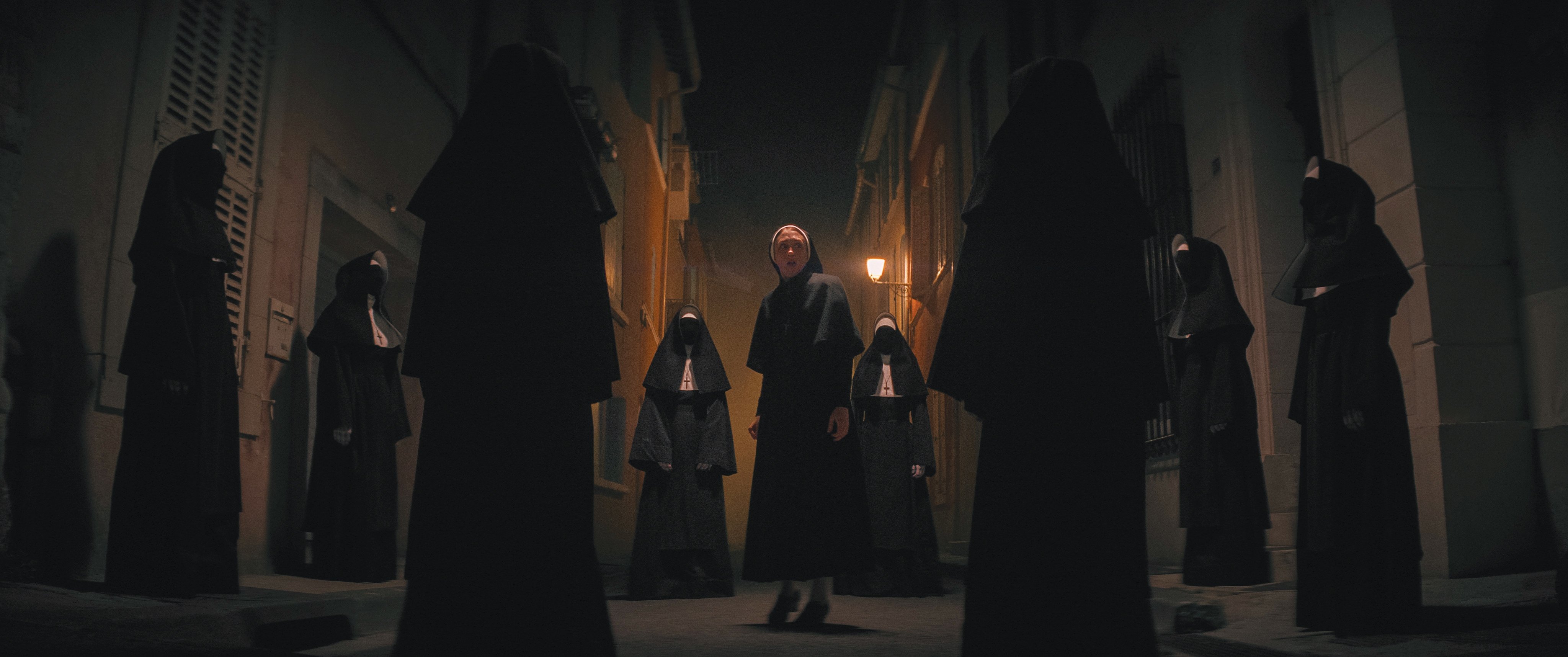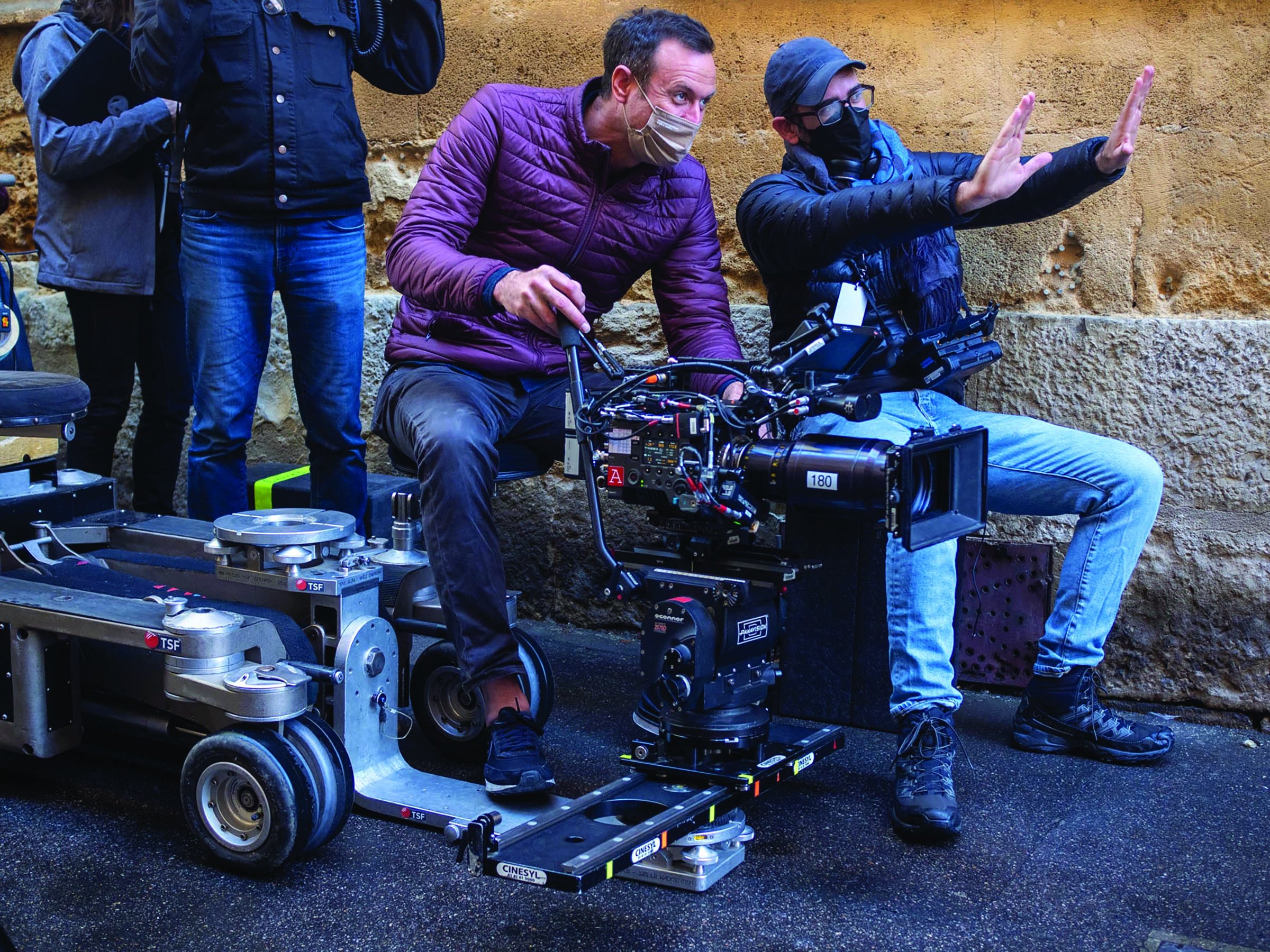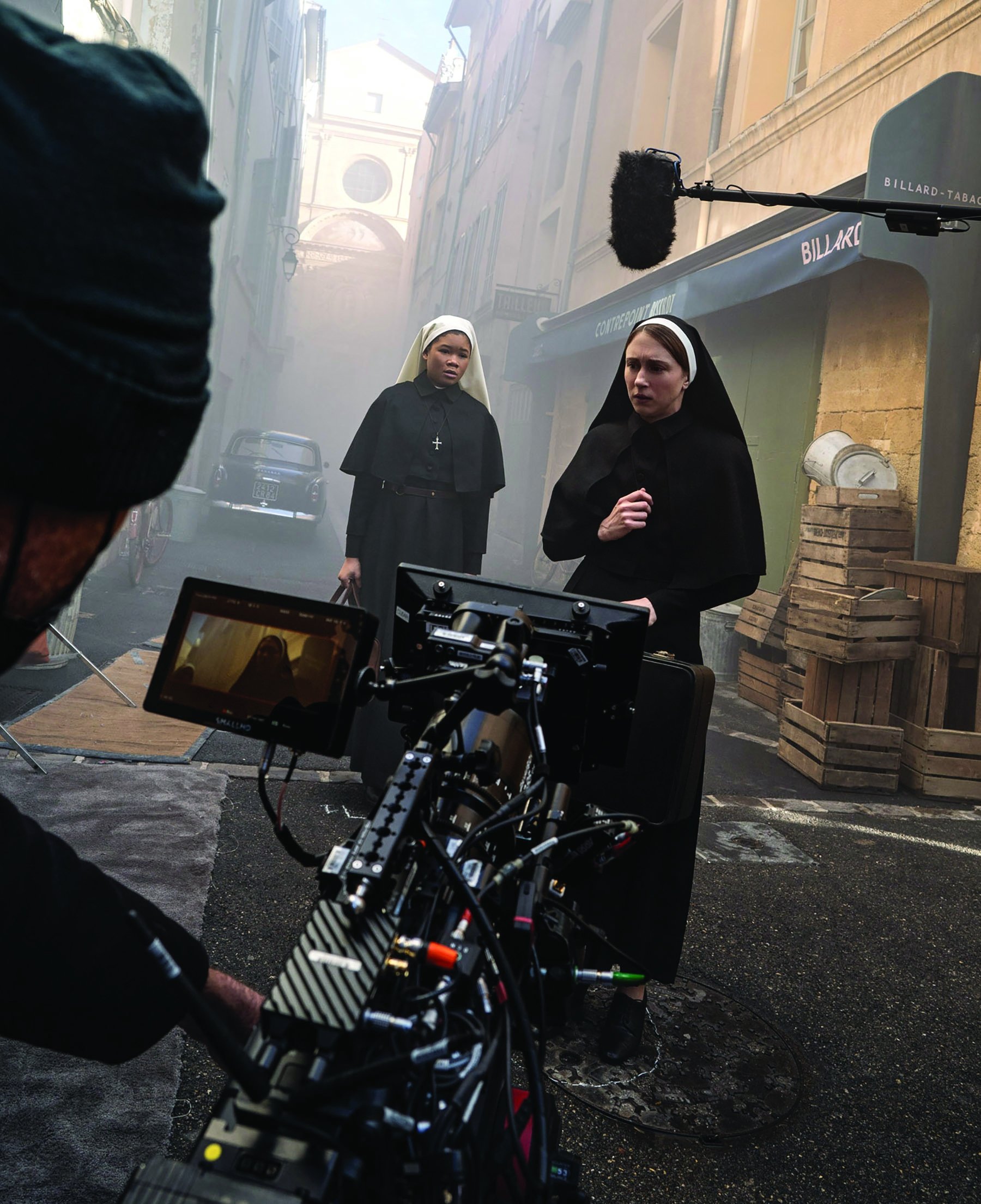
The Nun II: Unholy Occurrences
“Darkness can be used as a storytelling or tension-building device. In horror, what you don’t see is sometimes more.”
Most contemporary horror movies employ CGI and other digital wizardry to induce fright in audiences, and although the creative team behind director Michael Chaves’ The Nun II tapped those techniques, they also used several of the simplest cinematic tools — including darkness, shadow and flickers of light.
“Darkness can be used as a storytelling or tension-building device,” says cinematographer Tristan Nyby. “In horror, what you don’t see is sometimes more.”
An Everyday Reality
The latest iteration of The Conjuring franchise, The Nun II is set in France in the 1950s and follows Sister Irene (Taissa Farmiga), who is summoned to a girls’ school where the demon nun Valak (Bonnie Aarons) has taken up residence.
In lighting the picture, Nyby attempted to ground the story in an everyday reality. “I feel natural, motivated, realistic-feeling lighting is really effective. The more ‘real’ things feel to the audience, the scarier they are... Most everything is motivated or at least feels like it’s motivated by a real source.”
Key Locations
The feature was shot on location in Aix-en-Provence, France, as well as on stages in Provence. The main locations include the girls’ school as well as an abbey, both of which featured ample natural light. “They all had pretty great windows, so we were able to lean into that,” Nyby re¬calls. “Whenever I walk into a location, if the scene is taking place during the day, I’m going to look at the windows and look at what naturally happens with the real sun.”
For night scenes in the school, Nyby kindled the right mood with a few choice techniques. “At nighttime in the hallway, we had lights farther away, and it was a combination of smaller HMIs, Arri M40s and then LED mover lights by Robe. They’re remotely controlled lights where we could pinpoint little things. We did a subtle moonlight through the windows that way.”

Define “Dark”
Among the most challenging tasks for any cinematographer is defining “dark.” Says Nyby, “You always see in a script, ‘The room is dark’ — but you have to have some light or there’s nothing in the image. We tried to stick to our mantra of being naturalistic, but, of course, sometimes you have to stretch things a bit.”
One sequence features a character surveying a dark interior space with a flashlight, and that practical was the only source Nyby used to light the scene. “It was an LED flashlight that we made warmer with a CTS gel. We were trying to make it a bit more tungsten.”
During takes, an actor would hold one flashlight and gaffer Michel “Mitch” Bouquerel would hold another off-camera to bounce light off the floor. “We were working with very low light levels in some of the scenes,” says Nyby, noting the advantages of shooting with a Sony Venice 2. “We shot lots of stuff at 3,200 ISO, which was really beneficial at nighttime.”

Creepy Atmosphere
The abbey was among the largest locations in the picture. “A lot of what we were doing there was taking light away,” Nyby says. “Half the room is negative fill. Then, to supplement some ambiance, we used a variety of LEDs and big diffusions.”
Day exteriors were lit for a creepy atmosphere. “I tried to avoid direct sunlight,” Nyby recalls. “I think it just sets a mood; it makes people a bit more on edge. Generally, the feeling is that the characters are never really in a happy place.”
The finale — set in a wine cellar — proved the trickiest because of the action, effects and stunts. “We had to figure out where the light is coming from in a place that would generally be pretty dark,” says Nyby. “We ended up using a huge amount of lights through every little crack and window. We found a lot of it in our pre-light days. Since it’s the finale, it becomes a little more supernatural. It was highly logistical because of the size of the set, the amount of fixtures we had and the amount of action that takes place.”
Nyby, whose grandfather was director Christian Nyby (The Thing from Another World), and whose credits also include The Dark and the Wicked, says he relishes working in the horror genre. “It’s something that really lets DPs stretch their legs and be a really important part of the storytelling, more so than a lot of other genres. Mood and lighting can be main storytelling devices for an entire scene.”

Tech Specs
2.39:1
Cameras | Sony Venice 2
Lenses | Panavision G, T, E Series






